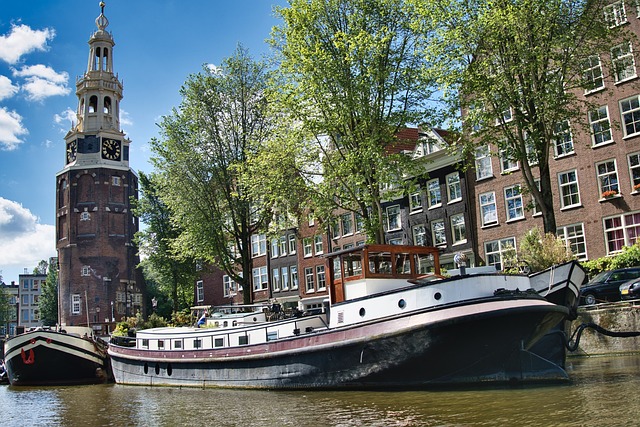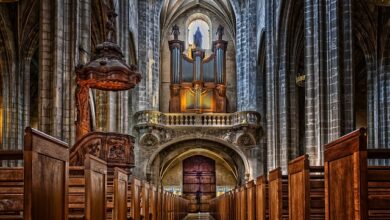Greek Mythology Sites You Can Visit Today

Greece, the cradle of Western civilization, is a land steeped in myth and legend. From the mighty gods of Olympus to the heroic tales of mortals who dared to challenge fate, Greek mythology has captivated imaginations for millennia. But these ancient stories are not just confined to dusty books or faded frescoes—they live on in the breathtaking landscapes, temples, and ruins scattered across modern-day Greece. If you’re fascinated by the myths of gods, heroes, and monsters, here’s your guide to visiting some of the most iconic sites tied to Greek mythology that still stand today.
1. Mount Olympus: The Home of the Gods
At 2,918 meters (9,573 feet), Mount Olympus towers over northern Greece as the tallest mountain in the country—and according to myth, it was also home to the Twelve Olympian Gods. Zeus, Hera, Poseidon, Athena, Apollo, and their divine kin were said to reside here in palatial splendor atop its misty peaks.
Today, adventurers and hikers flock to Mount Olympus National Park to explore its rugged trails and marvel at its natural beauty. While scaling Mytikas, the highest peak often associated with Zeus’s throne, requires some effort, the journey rewards visitors with panoramic views and an overwhelming sense of awe. As you climb, imagine the thunderous voice of Zeus echoing through the valleys or Artemis darting through the forests with her bow.
For those less inclined toward strenuous hikes, the foothills offer serene villages like Litochoro, where you can soak in local culture while planning your ascent. Whether you’re a seasoned mountaineer or simply someone seeking inspiration from the realm of the gods, Mount Olympus remains a must-visit destination.
2. Delphi: The Navel of the Earth
In ancient times, Delphi was considered the center of the world—a sacred site where mortals could communicate directly with the gods. According to legend, this “navel of the earth” was marked by a stone called the Omphalos, which signified its cosmic importance. It was also home to the Oracle of Delphi, Pythia, whose cryptic prophecies guided kings, warriors, and philosophers alike.
Perched on the slopes of Mount Parnassus, the archaeological site of Delphi is nothing short of spectacular. Wander among the ruins of the Temple of Apollo, where pilgrims once sought divine guidance, and gaze out over the stunning valley below. Nearby, the Delphi Archaeological Museum houses treasures unearthed during excavations, including intricate statues and artifacts that bring the myths to life.
As you walk through the sanctuary, reflect on the countless seekers who traveled here hoping for answers from Apollo himself. Though the oracle no longer speaks, the spirit of mystery and wonder lingers in every stone.
3. Athens: Birthplace of Athena and Democracy
No exploration of Greek mythology would be complete without a visit to Athens, named after the goddess Athena, who famously won the city’s patronage in a contest against Poseidon. Legend has it that Athena gifted the Athenians an olive tree—a symbol of peace and prosperity—while Poseidon offered a saltwater spring. The people chose Athena’s gift, cementing her role as the city’s protector.
The Acropolis, perched high above modern Athens, is the crown jewel of this historic city. Dominated by the Parthenon, a temple dedicated to Athena, the Acropolis served as both a religious and political hub in ancient times. Climb the steps to take in the majestic architecture and sweeping views of the city below. Don’t miss the Erechtheion, another temple on the Acropolis, which features the famous Porch of the Caryatids—six draped female figures serving as columns.
Beyond the Acropolis, the National Archaeological Museum in Athens offers one of the finest collections of artifacts related to Greek mythology. From golden masks of Agamemnon to sculptures of Dionysus, the museum provides a deeper understanding of how these myths shaped daily life in ancient Greece.
4. Crete: The Labyrinth of the Minotaur
Crete, Greece’s largest island, is synonymous with one of the most enduring myths of all—the tale of the Minotaur and the labyrinth. According to legend, King Minos of Crete commissioned the master craftsman Daedalus to build a labyrinth beneath his palace in Knossos to imprison the half-man, half-bull creature born of a union between Pasiphaë and a sacred bull.
Today, the Palace of Knossos stands as a testament to Minoan civilization, which flourished around 2000 BCE. Though much of what we see today is a reconstruction, the sprawling complex gives visitors a glimpse into the opulence and sophistication of this ancient society. Walk through the narrow corridors and imagine Theseus navigating the dark passageways, armed only with Ariadne’s thread to find his way back.
Nearby Heraklion, Crete’s capital, boasts the Archaeological Museum of Heraklion, which houses exquisite frescoes, pottery, and other relics from the Minoan era. Together, these sites paint a vivid picture of a culture rich in art, trade, and storytelling.
5. Corinth: Gateway Between Two Seas
Corinth holds a special place in Greek mythology as the setting for several key events. Bordered by the Gulf of Corinth and the Saronic Gulf, the city was strategically located between two seas, making it a vital hub for commerce and communication. Its mythical founder, Sisyphus, was condemned to roll a boulder up a hill for eternity in Hades due to his cunning nature—a story that continues to resonate as a metaphor for futile labor.
The ruins of Ancient Corinth include the Temple of Apollo, one of the oldest surviving structures in Greece, dating back to the 6th century BCE. Just outside the city lies the Corinth Canal, a man-made marvel carved through the Isthmus of Corinth. Though construction began in antiquity, the canal wasn’t completed until 1893, showcasing humanity’s enduring ambition to conquer geography.
A short drive away, the Acrocorinth fortress offers commanding views of the surrounding landscape. Once a formidable stronghold, it now serves as a reminder of Corinth’s storied past and its significance in both myth and history.
6. Mycenae: Kingdom of Agamemnon
Mycenae, located in the Peloponnese region, is forever linked to the epic tales of Homer’s Iliad and Odyssey . This fortified citadel was ruled by Agamemnon, the legendary king who led the Greeks in the Trojan War. His tragic return home—where he was murdered by his wife Clytemnestra—is one of the most dramatic episodes in Greek mythology.
Visitors to Mycenae can explore the Lion Gate, the main entrance to the citadel adorned with two lionesses flanking a central column. Inside, the Treasury of Atreus (also known as the Tomb of Agamemnon) is an impressive tholos tomb built with massive stones. Despite its name, there’s no definitive evidence linking it to Agamemnon, but its grandeur speaks volumes about the wealth and power of the Mycenaean civilization.
The nearby museum provides context for the site’s historical significance, displaying artifacts such as gold jewelry, weapons, and fresco fragments that hint at the lives of its inhabitants.


